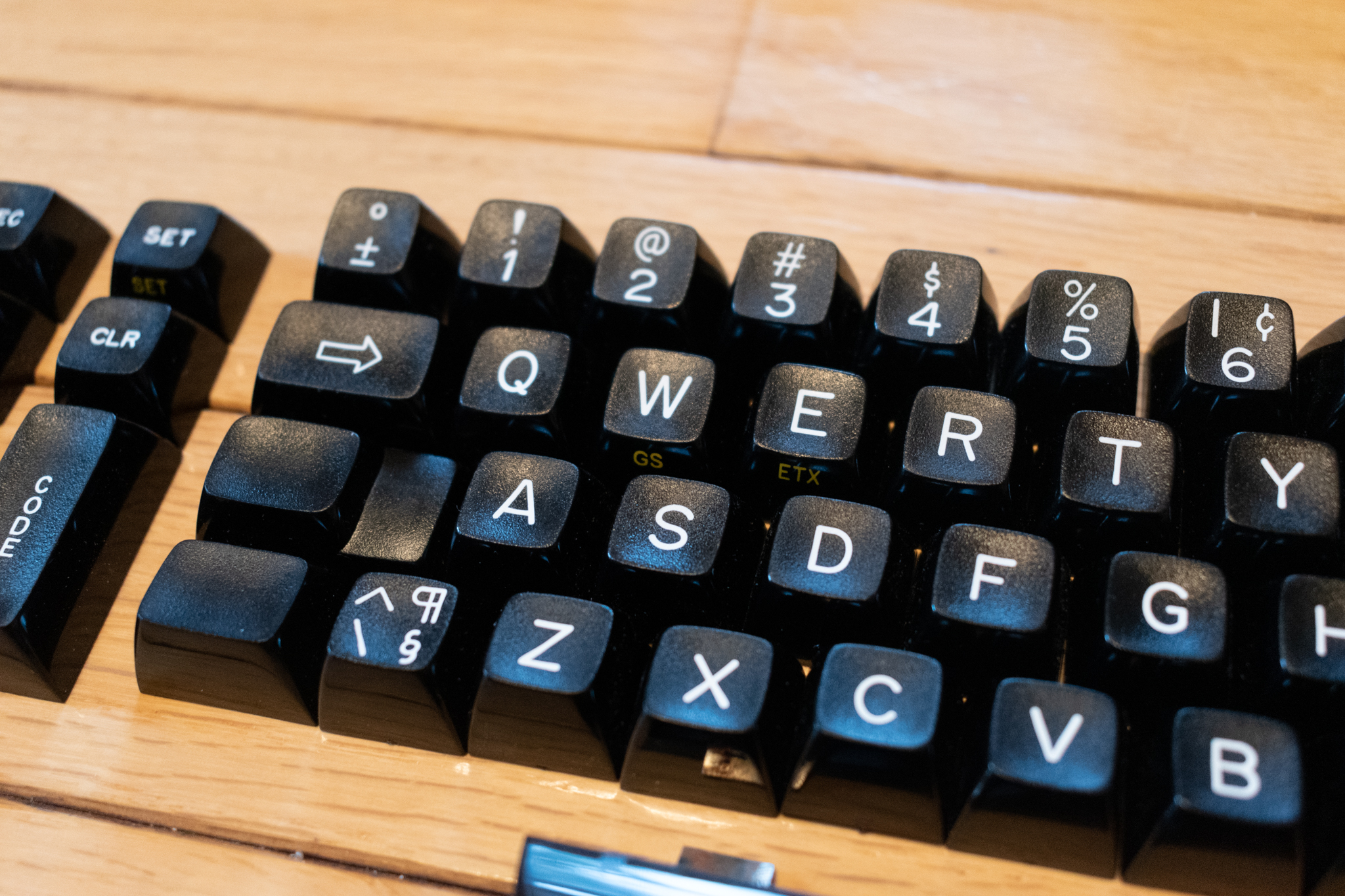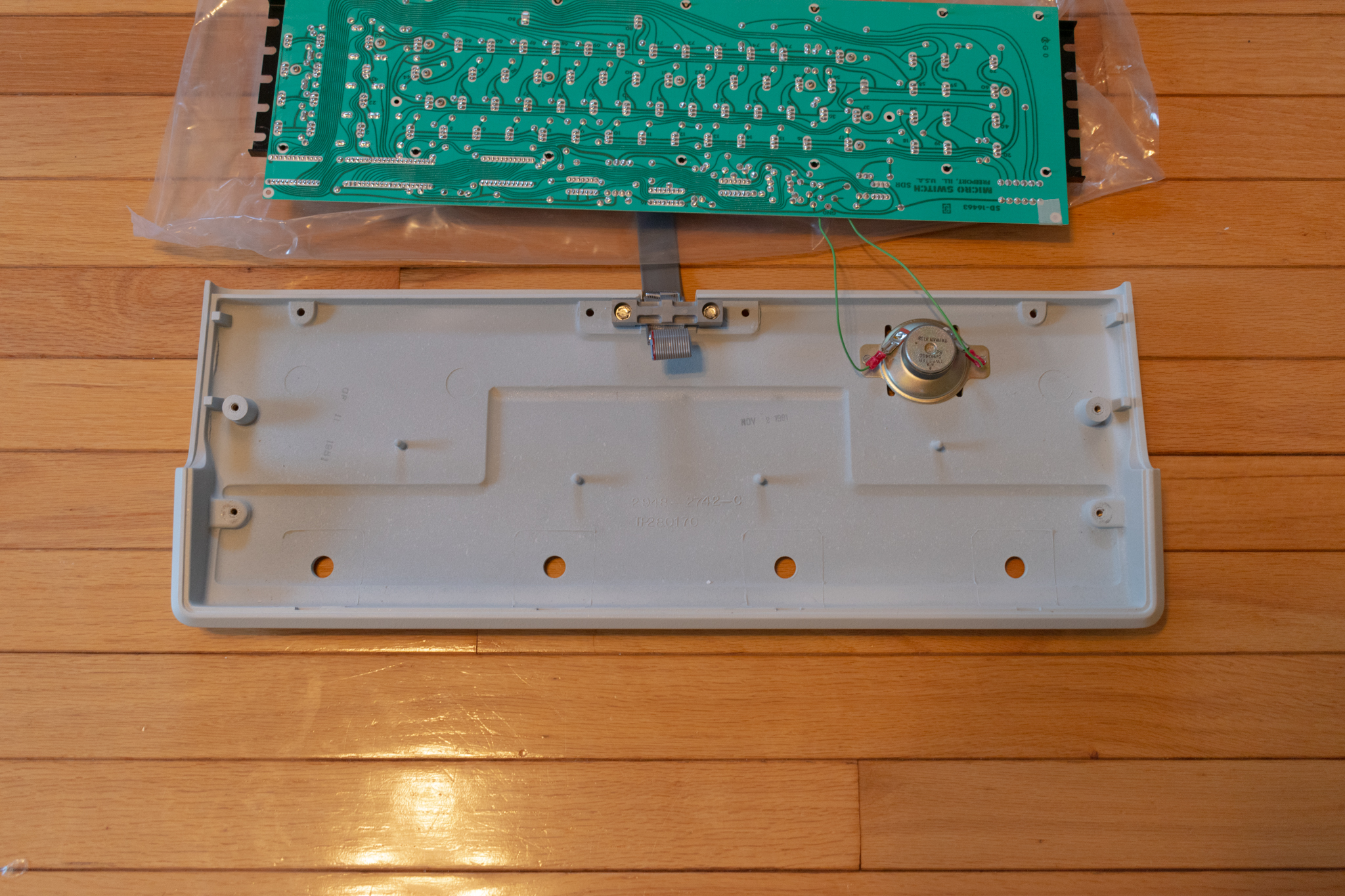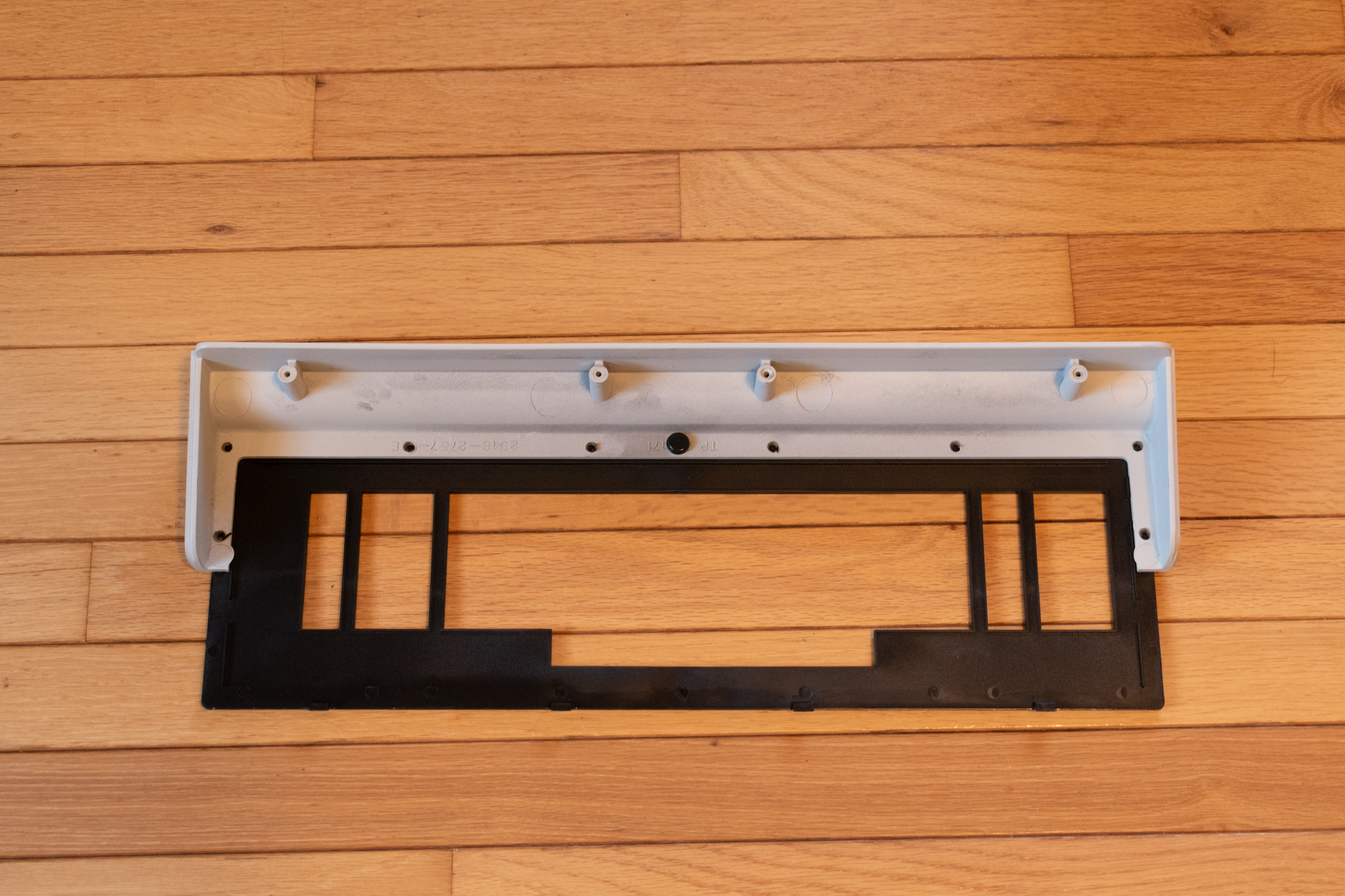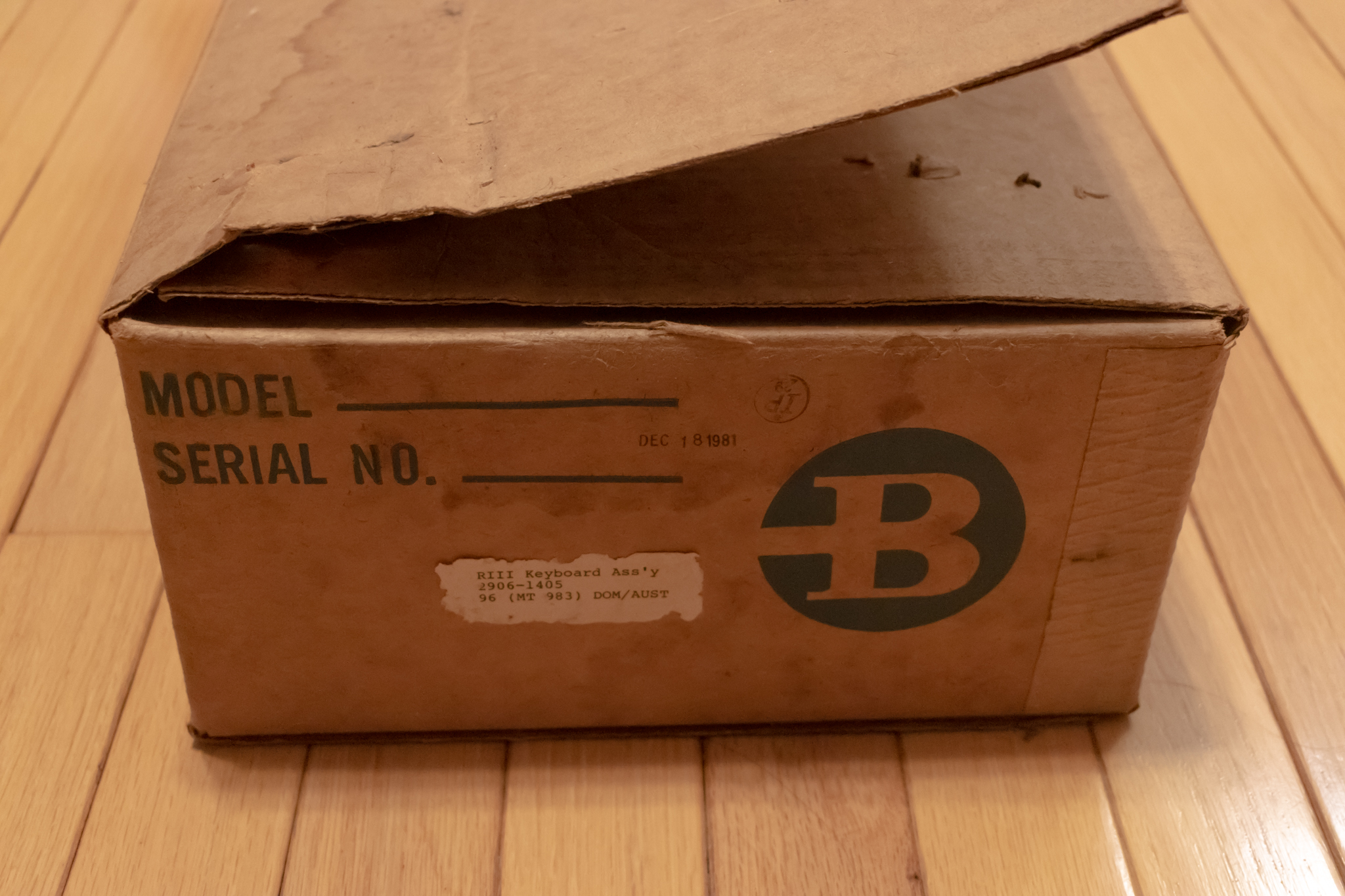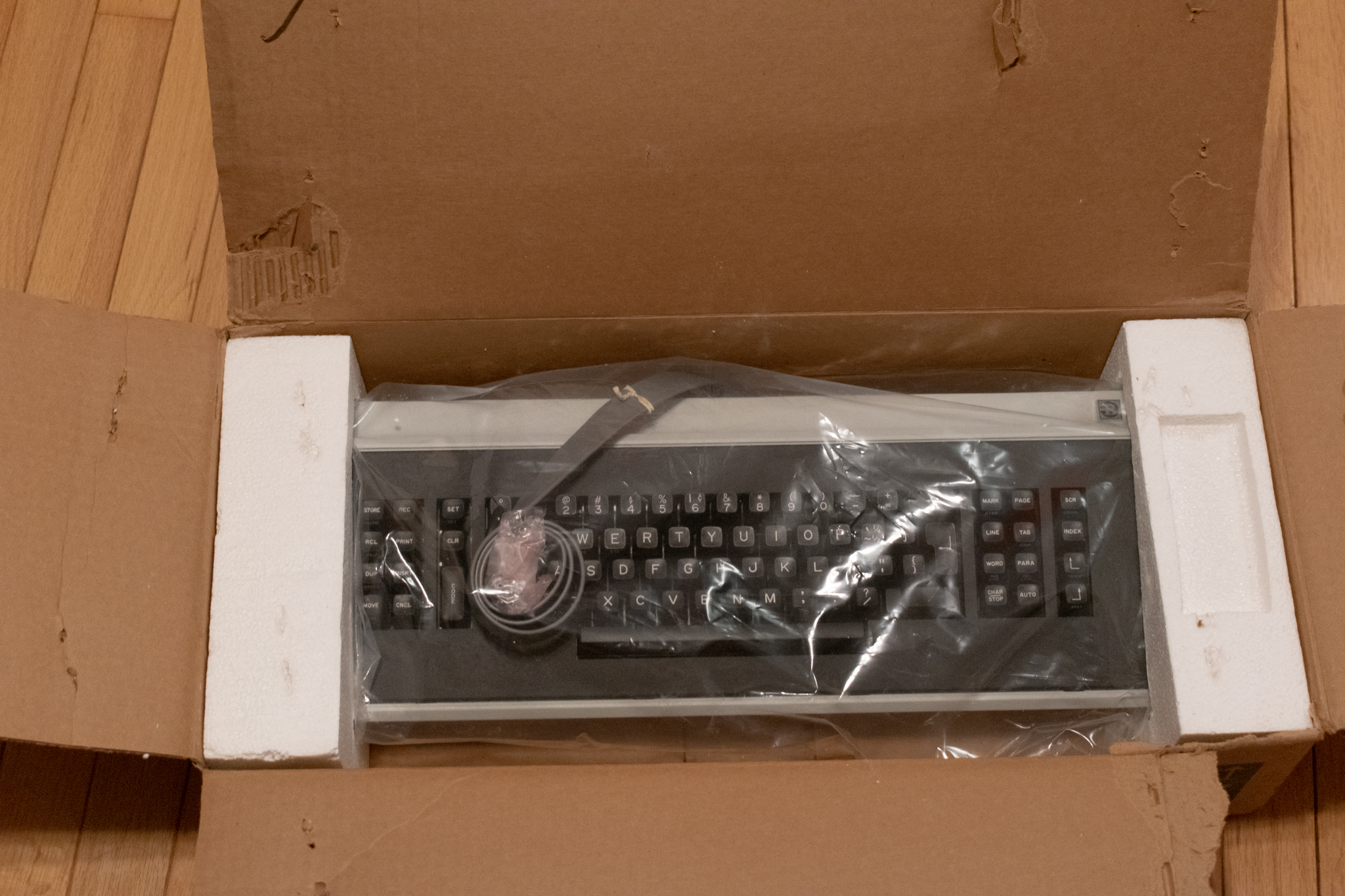Burroughs RIII
| Burroughs RIII | |
 |
|
| Switch | Micro Switch SD |
| Sense Method | Magnetic |
| Protocol | Proprietary |
| Keycaps | Double-Shot ABS |
The Burroughs RIII Keyboard was a keyboard that was bundled with the Burroughs RIII word processor, which was introduced as a low-cost typesetting system somewhere around the late 1970s. The example photographed was manufactured in 1981.
Description
The Burroughs RIII keyboard is a keyboard that was likely manufactured by Micro Switch, as it has Micro Switch SD Series switches and the PCB was manufactured by them as well. It uses a 16 pin female connector on the end, presumably to slot into a connector edge with fingers on a matching terminal or computer.
There are multiple types of switches present, with 4B2E being the majority of keyswitches. All 1.1oz keyswitches are used in stabilized keys, as there are two switches instead of one for them. The 10B2E switch is only present in the shift keys and the caps lock key, which interact with the latching mechanism. They appear to be the same, with the only difference being which part of the switch interacts with the latching mechanism.
At the very least, the internal keyboard assembly was created by Micro Switch in Freeport, Illinois.
Construction
Case
The keyboard consists of three distinct parts, of which is the two top case components, and the bottom case. In the top case, there is a textured black plastic piece, as well has a white plastic piece. It appears that the white plastic is painted, while the black plastic is not. The two parts are held together by rivets which seem to be part of the black piece melted on. The bottom case seems to be the same material as the white plastic in the top case, and is also painted the same color. There is a badge with the Burroughs logo on the top right corner of the case.
The case is held together by the top half sliding into the bottom, and secured by four screws in the bottom case present on the cable side of the keyboard.
Internals
4B2E switches are the majority of switches used, except stabilized keys which use two switches; a dummy switch and a regular switch weighted at half of the 4B2E switch. There are 10B2E switches present on the caps lock and shift keys, which interact with the latching mechanism. The caps lock key will latch when pressed down, and release when either shift keys are pressed. The 10B2E switch has a tactile feel on the shift keys, while all other switches are linear.
The switches are soldered to a one-sided PCB, and clipped into a black painted steel plate. The plate has multiple cutouts for screws, so the same design may have been reused for other keyboards. The plate is secured using metal standoffs and four screws into the bottom half of the case. There is a speaker present, possibly to provide audible feedback while typing. The PCB also appears to have been designed by hand, as the traces are not at strict angles and are instead wavy and natural.
The keyboard terminates in a 16-pin female slot connector that is keyed. The cable is flat and is slotted into the PCB.
Keycaps
The keycaps are blank or doubleshot, and front printed on some keys. All top legends are colored white, and the keys with unknown printing have yellow legends on the front. The keycaps are spherical, and they are sculpted on the main alpha cluster of the keyboard. All other keys are flat. Despite the spacebar appearing to be sculpted, it only appears so as the stabilizer shims are at an angle.
The top of the keycaps are textured, while the sides are smooth.
The legends on the keycaps appear to be similar to a typewriter's, which leads one to think that this may have been used with a word processing machine. However, this cannot be confirmed without documentation or the original machine.
Gallery
Overview
Keycaps
Internals
Packaging
External Links
- Classic Computer Brochures - Burroughs RIII





